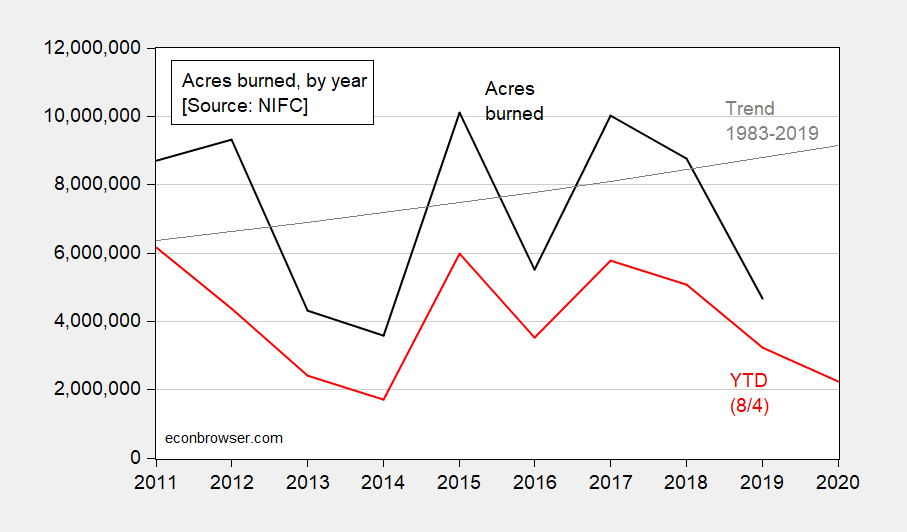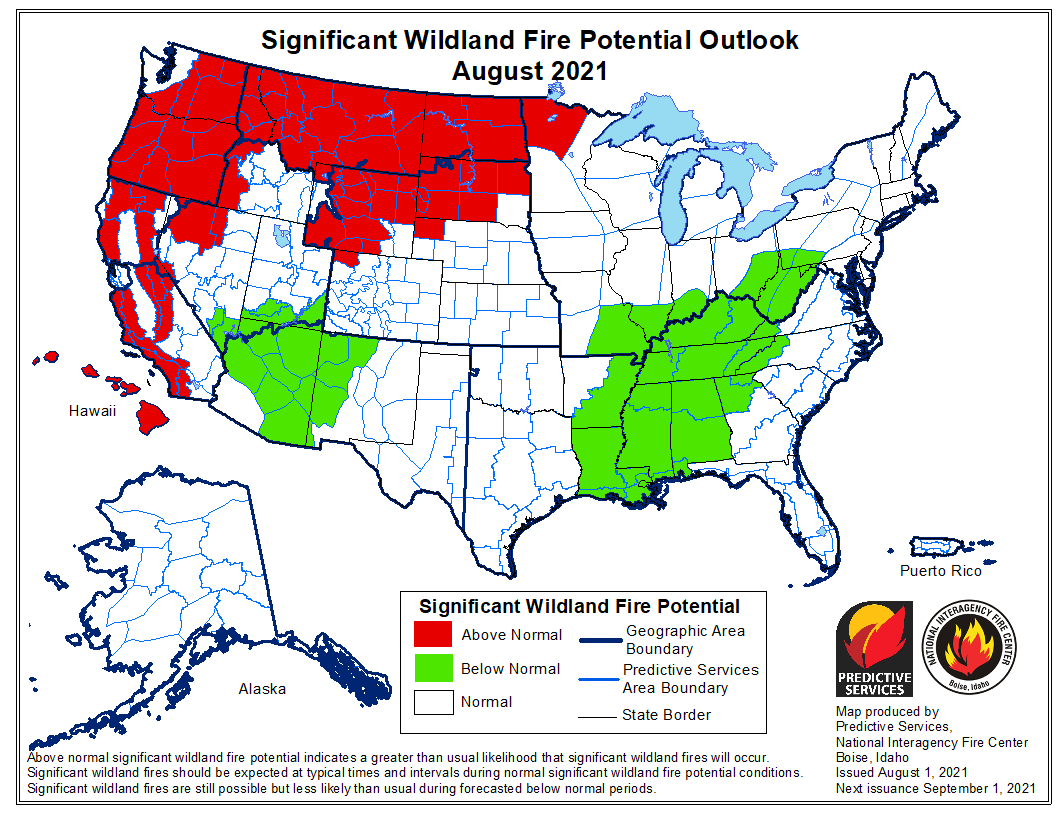If I didn’t know anything about the changing pattern of wildfire burns, I would’ve probably concluded “all clear”. To see this, consider the following picture I could’ve drawn a year ago:
Figure 1: Acres burned (black) and acres burned year-to-date (YTD) 4 August (red), and log linear regression fit based on 1983-2019 sample (gray). Source: NIFC1, NIFC2 , and author’s calculations.
As it turns out, a regression of log acres on log acres-YTD would have provided a respectable adj-R2 of about 0.88. However, adding 2020 shows why looking at things early — and without any institutional or historical knowledge — can lead one astray, perfectly illustrated by one comment written a week ago:
With the clear implication that there isn’t much to worry about. Here is the picture as of today.
Figure 2: Acres burned (black) and acres burned year-to-date 4 August (red), yeat-to-date 28 September (teal), and log linear regression fit based on 1983-2020 sample (gray). Source: NIFC1, NIFC2 , and author’s calculations.
In other words, in these times, a lot can happen in August and September. Here is the August and September fire potential outlook from the NIFC:
Source: NIFC, accessed 8/4/2021.
Source: NIFC, accessed 8/4/2021.
NIFC’s Monthly Seasonal Outlook report for August is here.
Adding in 2020 into the regression drops the adj-R2 to 0.43 (although the slope coefficient is still statistically significantly different from zero). Interestingly over the 1983-2019 period, using 28 September YTD as the regressor yields an adj-R2 of 0.99, declining slightly to 0.96 if using 1983-2020.
So, with 2020’s data in hand, best to approach forecasting 2021 with humility and circumspection.




The map you provide made me curious — is Canada’s situation as bad as suggested by the U.S. map? Why yes, yes it is: https://cwfis.cfs.nrcan.gc.ca/maps/fw
And while Canada doesn’t matter because nobody lives there and women’s soccer there is (checks headlines)…oh…
Smoke from Canadian fires is just as troublesome as from U.S. fires. Something like 1.2 million hectares (whatever those are) have burned in Canada so far this year and reciprocal fire assistance between Canada and the U.S. has mostly stopped this year because neither country has any spare fire-fighting resources.
It’s not like it’s just the United States that’s burning…
https://firms.modaps.eosdis.nasa.gov/map/#d:2021-08-03..2021-08-04,2021-08-03;@108.2,32.3,3z
After all, it’s global warming, not USA warming, but the news media largely disregard everyone but US.
JohnH: Agreed. Just to show that I think about the rest-of-the-world, here is global temperature anomaly – admittedly for Northern Hemisphere.
baffling: “so now we see the delta variant spreading like wildfire”
Or vice versa.
Splattered wine.